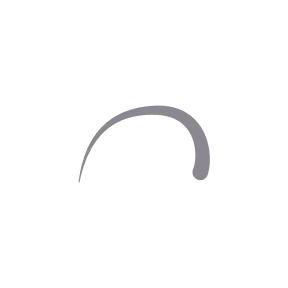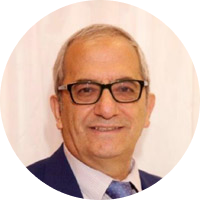
Areolareduksjon - det pigmenterte området rundt brystvorten
Årsaken til at man ønsker å redusere størrelsen på areolaen er som regel estetisk. Noen er født med stor areola mens andre har fått sine strukket ut i forbindelse med at brystet blir større ved graviditet eller vektøkning eller som en del av en brystutviklingsforstyrrelse som f.eks. tubulær brystutvikling. Man må vurderer om det skal i tillegg gjøres mindre snitt vertikalt under selv mamillen for å avlaste trykket på selve areola etter operasjon eller et mindre bryst løft hvis brystene henger. Dette gjør at areola holder sin form og diameter etter operasjon og ikke faller tilbake. Hvis det er kun forminskning av selve omkretsen på brystvorten kan dette korrigeres relativt enkelt med kirurgi, enten under lokalbedøvelse og/eller med sedasjon.
Stingene etterlater seg minimalt med arr og løser seg normalt sett opp av seg selv, eventuelt fjerner vi stingene etter 10 dager.
Operasjonen gir i prinsipp ikke grunnlag for sykemelding, men man bør være i ro i noe dager. Fysisk trening og hardt kroppslig arbeid bør man vente med i 2-3 uker. Arrene er i begynnelsen ofte røde, kløende og harde men med tiden ca. 3-6 måneder blekner og mykner dem. I svært sjeldne tilfeller blir arrene brede og godt synlige hvis pasienten lett får kolloide arr. Unngå direkte soleksponering det første året for ikke å utvikle pigmentforandringer og pen sårtilheling.
Henting og overnatting
Du må på forhånd avtale med en person om å hente deg på klinikken ca. 1 time etter avsluttet operasjonen, ettersom du selv ikke kan kjøre bil, ta kollektiv transport eller taxi alene. Du skal også ha noen hos deg samme dag og første natten.
Bor du langt fra klinikken, anbefaler vi at du overnatter i Oslo, enten hos familie/venner eller på hotell sammen med en pårørende.
Hoteller i nærhet av Oslo Plastikkirurgi;
Hotel Gabels Hus i Gabelsgate 16.
Frogner House Apartments, Bygdøy Allé 53.
(Vi har avtale med Frogner House Apartments, informer om oss ved booking av rom)
Før operasjonen
Du må være frisk på operasjonsdagen. Er du i tvil om du skulle være forkjølet eller lignende, må du ta kontakt med oss. Operasjonen utføres ikke når man har influensa med feber, hoste eller annen infeksjon i kroppen. Før operasjonen får du resept på antibiotika, evt. smertestillende og Hibiscrub oppløsning 40 mg/ml som du får kjøpt på apoteket.
Dagen før operasjon og på operasjonsdagen skal du vaske deg med Hibiscrub oppløsning i dusjen over hele kroppen. Dette er en desinfiserende såpe som skal skylles av med vann, og huden tørkes med et rent håndkle. Ta på deg rene klær når du reiser hjemmefra. Ikke bruk parfyme og krem. Alt av smykker, piercing og neglelakk/falske negler må være fjernet senest dagen før operasjonen og settes ev tilbake 7 til 10 dager etter operasjonen.
For å få et best mulig resultat og for å unngå komplikasjoner, anbefales det at du har normalvekt, og ikke en altfor høy BMI. Røyker du, eller benytter nikotin som for eksempel snus eller elektroniske sigaretter, må du slutte minst 2 uker før operasjonen og 2 uker etter operasjonen.
Du skal møte fastende til operasjonen. Det vil si at du ikke skal spise mat inkludert frukt eller drikke juice med fruktkjøtt eller melkeprodukter 6 timer før operasjonen. Du kan drikke vann, saft, juice uten fruktkjøtt eller kaffe/te uten melkeprodukter eller tygge tyggegummi/drops/halspastiller inntil 4 timer før operasjonen. Medikamenter som du eventuelt skal ta på operasjonsdagen kan svelges med 1 glass vann maks. 100 ml inntil 1 time før anestesistart.
Du må på forhånd avtale med en person om å hente deg på klinikken ca. 1 time etter avsluttet operasjonen, ettersom du selv ikke kan kjøre bil, ta kollektiv eller taxi alene.
Det er viktig at du ca. 14 dager før operasjonen slutter med medisiner som virker blodfortynnende, gjerne etter samråd med fastlegen din eller oss. For andre medisiner konferer med klinikken før operasjonen. Mye hvitløk og helsekostpreparater skal heller ikke inntas.
På operasjonsdagen
Du blir mottatt av vårt personale som ferdigstiller deg til operasjonen før kirurgen ser til deg. Før selve inngrepet vil kirurgen gå igjennom inngrepet, tegne opp det planlagte, samt svare deg på dine spørsmål du måtte ha. Anestesipersonell kommer også og hilser på deg og svarer på dine spørsmål. Når operasjonen skal begynne vil operasjonssykepleier hente deg og vaske operasjonsområdet imens anestesipersonell gir deg beroligende middel i armen så du sover under operasjon. I tillegg setter kirurgen lokal bedøvelse i operasjonsområde for en langvarig smertestillende effekt i operasjonsområdet etter operasjonen, som i tillegg forminsker blødning i området.
Etter operasjonen blir du flyttet til oppvåkningsrommet der du har din egen seng. Du hviler så i 1-2 timer og får servert mat og rikelig med drikke i form av brødmat, yoghurt og saft (husk å informere om allergier). Evt smertestillende gis ved behov. Kirurgen ser til deg før hjemreise/ hotelloppholdet og du blir avklart av anestesipersonell før du reiser hjem med en voksen ledsager. PVK som er festet til hånden blir fjernet før du drar. Det må brukes bil eller drosje som transportmiddel rett etter operasjon, vi anbefaler ikke kollektivtransport eller det å gå.
Etter operasjonen
Alle pasienter kommer til postoperativ kontroll dagen etter operasjon. Vi anbefaler deg ikke å reise med fly de første 48 timene etter operasjonen. Under denne tiden skal en kontrolltime anordnes i klinikken og du skal komme til kontroll på klinikken dagen etter operasjonen.
De første timene etter operasjonen kan du føle deg litt sliten, og av og til noe kvalm. Det er viktig at du tar smertestillende medisiner etter avtale og ved behov, og passer på å drikke rikelig det første døgnet. Noen kan bli litt svimle, og det er derfor lurt å bruke noen minutter når du skal reise deg. De første to døgnene skal du ha ro og ligge mest mulig stille, med overkroppen hevet. De neste fem dager kan du bevege deg forsiktig. Dersom du har en aktiv jobb, er det lurt å være hjemme. Etter operasjonen får du en spesial-bandasje som fjernes etter 3 dager, teipen beholdes på i 2 uker. Du skal bruke sports-BH i 6 uker etter at bandasjen er fjernet. Etter at teipen fjernes (etter 2 uker) kan du dusje området og sette på ny teip. Det anbefales at du teiper arrene med hudvennlig teip i minst 2 måneder. Kirurgisk teip som Micropore eller Steri-Strip kjøpes på apoteket, alternativt silikon teip.
Vi lukker såret med sting som løser seg opp av seg selv.
Det endelige resultatet kan først vurderes etter 3-6 måneder. Etterkontroller avtales med klinikken; dagen etter operasjon, etter 1-2 uker og 3-6 mnd, samt sluttkontroll etter et år. Du må selv ringe for å avtale kontrollene, alternativt avtale med klinikken på operasjonsdagen.
Be om veiledning og råd
De beste rådene kan vi gi ansikt til ansikt. Vi vil veilede deg til den beste løsningen for deg.

Ansvarlig lege er Dr. Amin Kalaaji, overlege dr.med, spesialist i plastikkirurgi og klinikksjef ved Oslo Plastikkirurgi, og leder for Norsk forening for estetisk plastikkirurgi (NFEP) 2018-2020.
Dr. Kalaaji har mange verv og holder foredrag og opplæring verden rundt. Dette kommer alle våre pasienter til gode da han alltid er oppdatert på de nyeste og mest avanserte behandlinger og operasjonsteknikker.
Pasientsikkerheten, høy kvalitet og individuell behandling veier alltid høyest hos oss på Oslo Plastikkirurgi.
FAQ - Ofte stilte spørsmål
Oslo Plastikkirurgi svarer her på ofte stilte spørsmål, og vi håper med dette at du får god informasjon. Vi ønsker å være behjelpelig i prosessen før en operasjon. Skulle du ha flere spørsmål er det bare til å skrive eller ringe til oss.
Når man ønsker mindre areola og/eller endre form.
Når man har underutviklede eller tubulære bryster.
Ved volumforskjell på brystene/brystasymmetri.
Areolareduksjon går ut på at man fjerner huden i ytterkant av areolaen, så man forminsker brystvorten. Man lukker såret med sting som løser seg opp av seg selv hvis ikke annen tråd skal benyttes.
Operasjonen kan utføres som en separat operasjon, eller som en del av et brystløft eller en brystreduksjon.
Normalt kan man trene forsiktig etter 3 uker, og du skal bruke armene dine forsiktig de tre første ukene etter inngrepet, dvs ikke løfte armene høyt, ei heller sove på magen.
Du kan jobbe normalt etter 1-2 dager, så lenge du ikke har hardt fysisk arbeid. Konsuler med din lege om dette på konsultasjonen i tilfelle.
Alle pasienter må gjennom en konsultasjon før operasjon. Konsultasjonen blir gjennomført av vår erfarne plastikkirurg som vil stille deg spørsmål rundt din medisinske status; tidligere eller aktuelle sykdommer, tidligere operasjoner, bruk av medikamenter og lignende. Deretter blir en undersøkelse gjennomført, og kirurgen vurderer en eventuell operasjon.
Er du egnet for inngrep får du informasjon om selve operasjonen, forholdsregler for tiden før og etter inngrepet, og du vil få svar på dine spørsmål.
For pasienter med lang reisevei tilbyr vi konsultasjon via telefon og/eller videokonsultasjon. Vi sender da i forkant et helseopplysningskjema som skal fylles ut og returneres til oss før konsultasjonen. Du sender også noen bilder til oss.
Skulle det blir aktuelt med en operasjon vi kirurgen gjennomføre en grundig vurdering dagen før den planlagte operasjonen.
Du må være frisk på operasjonsdagen. Er du i tvil om du skulle være forkjølet eller lignende, må du ta kontakt med oss. Operasjonen utføres ikke når man har influensa og/eller feber eller hoste eller annen infeksjon. Før operasjonen får du resept på antibiotika, evt. smertestillende og Hibiscrub oppløsning 40 mg/ml som du får kjøpt på apoteket.
I Norge er det ikke lov til å vise før- og etterbilder av silikon fra kosmetiske inngrep ved markedsføring eller på klinikkens nettsider. Vi kan imidlertid vise flotte bilder fra tidligere pasienter når du kommer på konsultasjon hos kirurgen. Dette kan være til stor hjelp, og det kan gjøre det lettere for deg å forestille deg et forventet resultat.
Hvis korreksjon er nødvendig pga komplikasjoner eller ikke tilfredsstillende resultat, gjøres dette kostnadsfritt innen et år, forutsatt at det foreligger medisinsk indikasjon og et klart forbedringspotensialet. Dette er vår ettårs garantiavtale.
